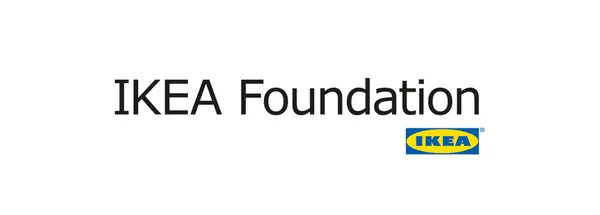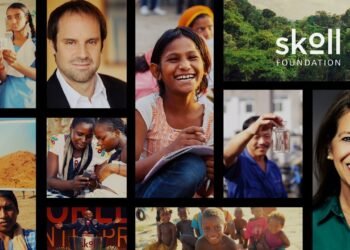What if a single organization could tackle both poverty and climate change while creating sustainable livelihoods for millions? This powerful question drives the mission of a remarkable philanthropic force established in 1982 by Ingvar Kamprad.
Originally focused on design, this entity transformed its mission dramatically. It now addresses our world’s most pressing challenges through strategic grants and partnerships.
With a 2022 budget exceeding €280 million, the foundation creates real impact. It supports renewable energy projects, reduces harmful emissions, and helps vulnerable communities build better futures.
Through collaborations with organizations like the United Nations, it brings solar panels to refugee camps and improves food systems. This work demonstrates how business success can drive meaningful social change.
Key Takeaways
- Founded in 1982 with a mission that has evolved to address global challenges
- Focuses on renewable energy, poverty reduction, and climate change solutions
- Works with partners worldwide to create sustainable livelihoods
- Provides substantial funding through grants to support vulnerable communities
- Helps millions of people, including children and refugees, build better futures
- Committed to reducing emissions and supporting climate-positive actions
- Partners with major organizations like the United Nations for greater impact
What is the IKEA Foundation?
This philanthropic organization stands as a powerful force for global good. It operates independently with a clear vision for creating lasting change.
Mission and Core Focus Areas
The foundation’s mission centers on improving lives for vulnerable children. It achieves this through sustainable livelihoods and climate action.
Core programs target four key areas: agroecology, regenerative agriculture, green enterprise development, and renewable energy. These initiatives help communities build resilience against climate change.
Each focus area connects to poverty reduction and emission reduction goals. The work supports both people and planet simultaneously.
Organizational Structure and Leadership
This Dutch not-for-profit operates under Netherlands law. It maintains complete independence in its grant-making decisions.
CEO Jessica Anderen leads the strategic direction. Her team partners with major organizations worldwide.
Key collaborations include the United Nations High Commissioner for Refugees. These partnerships amplify impact across continents.
Funding and Financial Scale
The Stichting INGKA Foundation provides all funding. This creates remarkable financial stability for long-term projects.
In 2022, the organization disbursed €268.2 million in grants. Operational expenses remained low at just €14.5 million.
Transparent financial reporting through ANBI disclosures builds trust. The foundation prefers funding established organizations with proven track records.
This approach ensures every euro creates maximum impact for communities in need.
The Evolution of the IKEA Foundation
What began as a specialized design-focused initiative would eventually become one of Europe’s most significant charitable forces. This transformation unfolded through several critical phases that reshaped its mission and impact.
1982 Founding and Original Design Focus
Ingvar Kamprad established the organization in 1982 with a specific vision. It initially promoted innovation in architectural and interior design through limited grants.
The Lund Institute of Technology received most funding during these early years. Annual disbursements averaged approximately €1.35 million during this period.
The 2006 Economist Report and its Aftermath
A 2006 investigation revealed minimal charitable giving relative to substantial wealth. The report triggered widespread public scrutiny and criticism.
Accusations emerged regarding tax avoidance arrangements and profit shielding mechanisms. This exposure created pressure for significant operational changes.
The 2009 Pivot to Children’s Welfare
The organization underwent a legal battle to modify its founding charter in 2009. This permitted a strategic shift toward children’s welfare programs worldwide.
Grant-making increased dramatically following this restructuring. Between 2009 and 2021, the charity provided over €1.5 billion in funding.
The 2018 Shift to Climate and Livelihoods
Another major transformation occurred in 2018 with a new focus on environmental sustainability. The mission expanded to address climate change and sustainable livelihoods.
This realignment responded to global environmental challenges and poverty reduction needs. Partnerships with major international organizations multiplied during this phase.
Transparency increased significantly as the charity moved beyond its original design-centric projects. The evolution reflects broader trends in corporate philanthropy responding to global crises.
Major Initiatives and Impact of the IKEA Foundation
This organization demonstrates how strategic philanthropy creates meaningful change across multiple continents. Its programs address interconnected challenges through targeted investments and partnerships.
Combating Climate Change and Promoting Renewable Energy
The Global Energy Alliance for People and Planet represents a landmark $1 billion commitment. This partnership with Rockefeller Foundation aims to bring renewable energy to one billion people.
Specific projects tackle textile waste reduction in India through Enviu collaboration. The Global Methane Hub initiative focuses on cutting agricultural emissions significantly.
Clean air funding supports communities affected by pollution. Solar panel installations and efficient appliances reach impoverished areas through Acumen partnerships.
These efforts contribute to reducing one billion tonnes of CO2 emissions. The work demonstrates how climate action connects directly to poverty reduction.
Supporting Refugees and Emergency Response
Substantial funding supports UNHCR operations in Dollo Ado refugee camps. This €89.33 million investment improves infrastructure, education, and livelihoods for displaced people.
The Better Shelter initiative delivered over 90,000 flat-packed shelters worldwide. These units include integrated solar panels despite some design challenges.
Emergency response includes €20 million for Ukrainian refugee support. Doctors Without Borders received €9.05 million for Turkey-Syria earthquake relief efforts.
Renewable energy projects specifically designed for refugee camps enhance living conditions. These initiatives provide both immediate aid and long-term stability.
Building Sustainable Livelihoods and Food Systems
Aceli Africa received €26.27 million to support agricultural loans for small businesses. This investment helps farmers access crucial funding for growth and sustainability.
Agricultural grants totaled €165 million in 2023 alone. This funding promotes agroecology and builds resilience against climate impacts.
Food systems transformation remains a core focus area. Programs strengthen local economies while improving nutrition for children and families.
Partnerships with organizations like Save the Children amplify impact across communities. The work creates sustainable livelihoods that lift millions from poverty.
Conclusion: A Legacy of Global Philanthropy
Billions in targeted grants have reshaped lives across continents through focused climate and poverty initiatives. Since 2009, over €1.5 billion in funding has created sustainable change for millions worldwide.
The organization’s journey shows remarkable adaptation. It evolved from design focus to addressing urgent global needs through renewable energy and food systems.
Strategic partnerships with major organizations amplify impact significantly. These collaborations bring solar panels to refugee camps and support agricultural resilience.
Emergency response efforts demonstrate commitment during crises. The legacy continues through ongoing work to reduce emissions and build better livelihoods.
This model sets a powerful precedent for corporate philanthropy worldwide. It proves that business success can drive meaningful social and environmental progress.
FAQ
What is the main mission of the IKEA Foundation?
The main mission is to create a better everyday life for families and children living in some of the world’s poorest communities by tackling the root causes of poverty and climate change.
How is the foundation funded?
It is funded by the INGKA Foundation, the owner of the Ingka Group, which operates the majority of IKEA stores. Its grants are one of the largest corporate philanthropic efforts globally.
What was the catalyst for the foundation’s major strategic shift in 2009?
A pivotal 2006 report from *The Economist* on the state of children’s rights prompted a deep internal review, leading to a 2009 refocusing of all efforts exclusively on improving the lives of children.
What are the foundation’s current core focus areas?
Its current work is centered on two interconnected areas: combating climate change by promoting renewable energy and protecting the planet, and building resilient livelihoods through improved food systems and economic opportunities.
How does the foundation support refugees?
It is a leading private funder of the UNHCR (United Nations High Commissioner for Refugees), providing grants for emergency response, improving conditions in refugee camps, and developing long-term solutions for displaced people.
Can you name a major renewable energy initiative it supports?
A significant initiative is its partnership to provide solar panels and other renewable energy solutions to communities off the grid, reducing emissions and improving access to power for millions.





